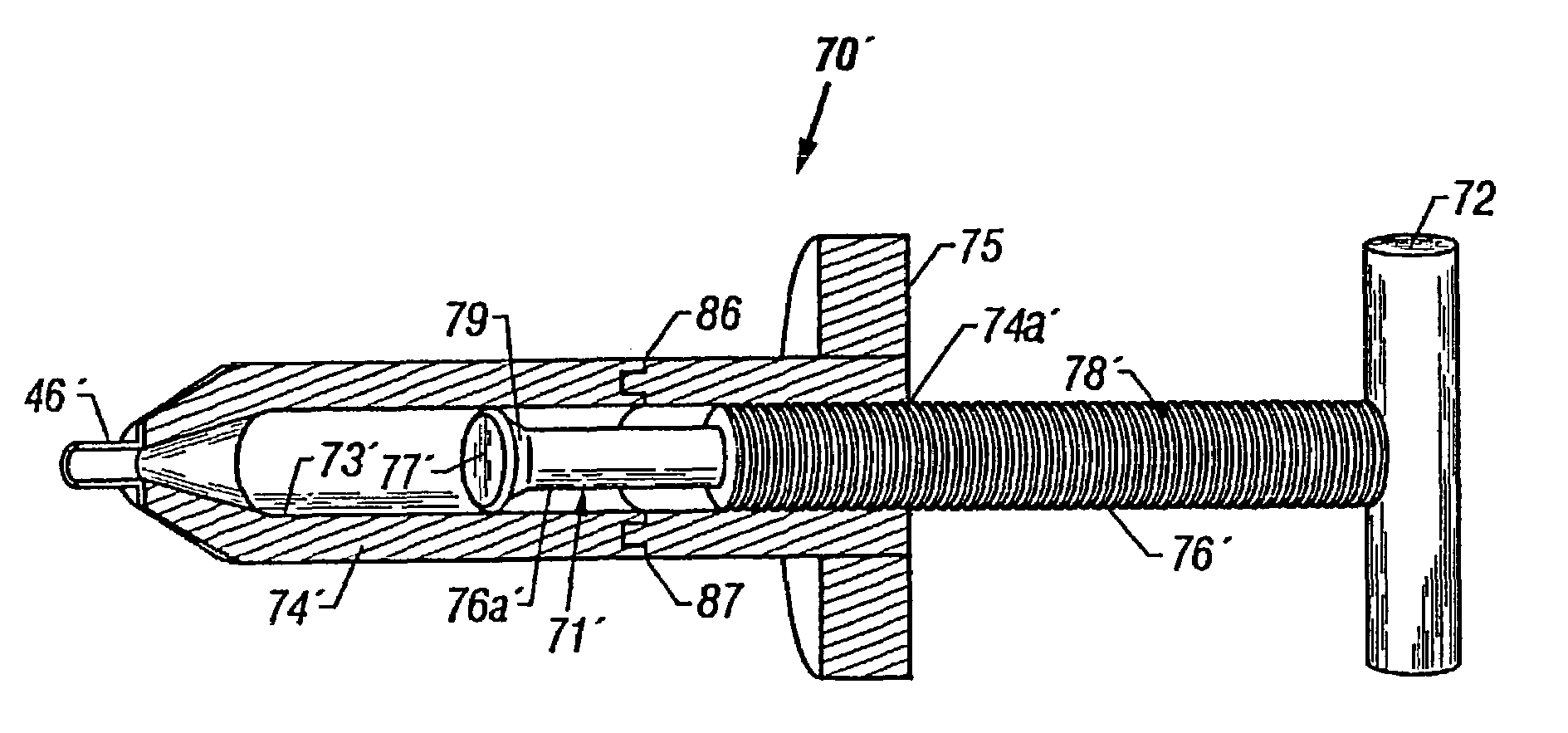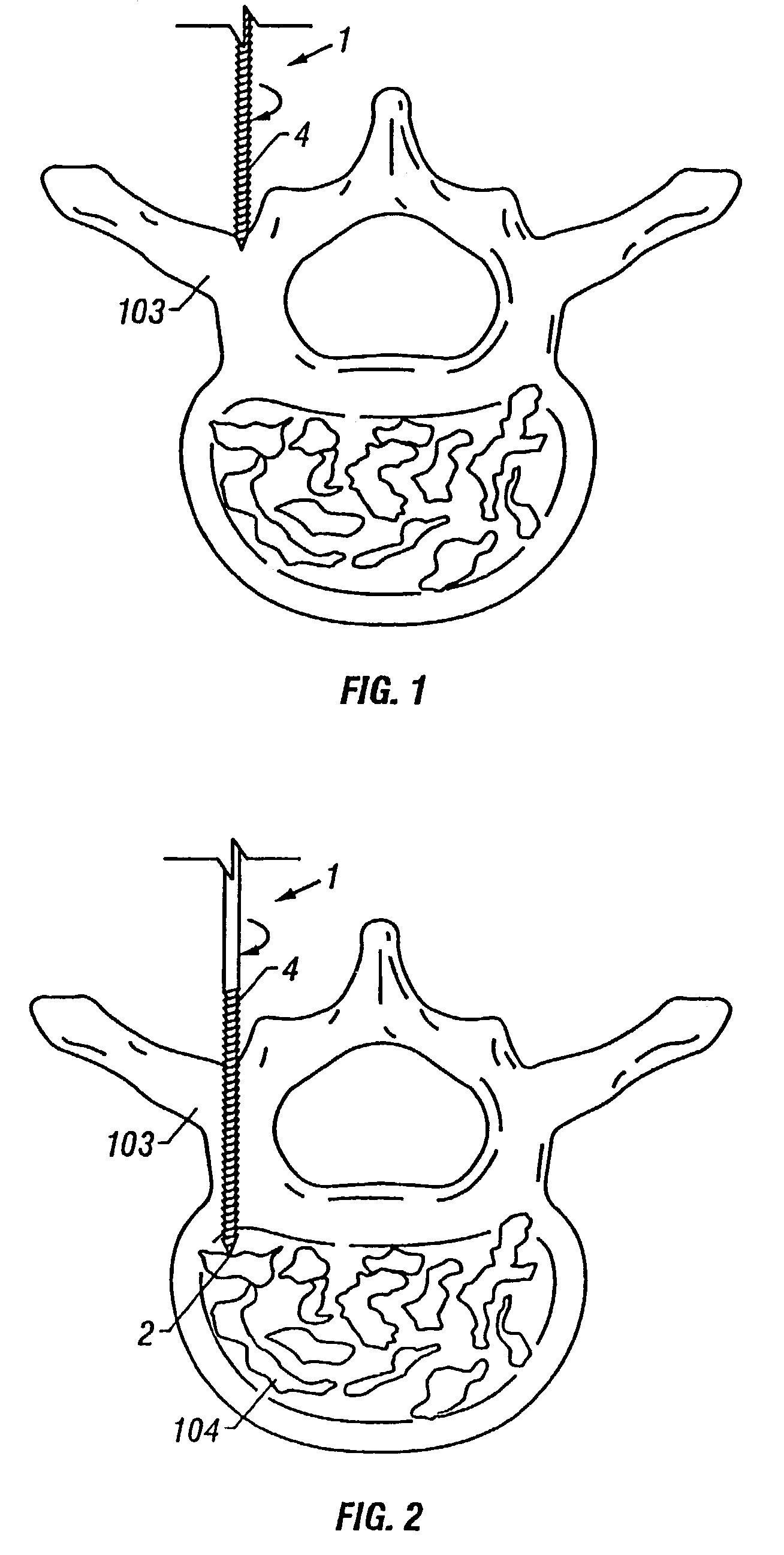High pressure applicator
a technology of applicators and cylinders, applied in the field of instruments, can solve the problems of limited viscosity of pmma, insufficient volume to complete the procedure, and complicated procedures, and achieve the effect of high pressur
- Summary
- Abstract
- Description
- Claims
- Application Information
AI Technical Summary
Benefits of technology
Problems solved by technology
Method used
Image
Examples
Embodiment Construction
[0056]The present invention substantially improves the delivery of hard tissue implant sites to the targeted zone of implantation, and is especially well suited for percutaneous deliveries. The present invention substantially reduces several of the risk factors associated with the performance of percutaneous vertebroplasty. Additionally, the present invention enables an increase in an upper acceptable viscosity value of the implant to be delivered because of the increase in the amount of pressure available for controllably driving the delivery.
[0057]An example of a procedure for performing percutaneous vertebroplasty is illustrated in FIGS. 1-6. Beginning with FIG. 1, an example of the use of depth guided instruments will now be described. For a more detailed description of various depth-guided instruments that can be used for accessing the cortical bone, the reader is directed to copending application Ser. No. 08 / 950,382, filed on Oct. 14, 1997, entitled “Precision Depth Guided Ins...
PUM
 Login to View More
Login to View More Abstract
Description
Claims
Application Information
 Login to View More
Login to View More - R&D
- Intellectual Property
- Life Sciences
- Materials
- Tech Scout
- Unparalleled Data Quality
- Higher Quality Content
- 60% Fewer Hallucinations
Browse by: Latest US Patents, China's latest patents, Technical Efficacy Thesaurus, Application Domain, Technology Topic, Popular Technical Reports.
© 2025 PatSnap. All rights reserved.Legal|Privacy policy|Modern Slavery Act Transparency Statement|Sitemap|About US| Contact US: help@patsnap.com



